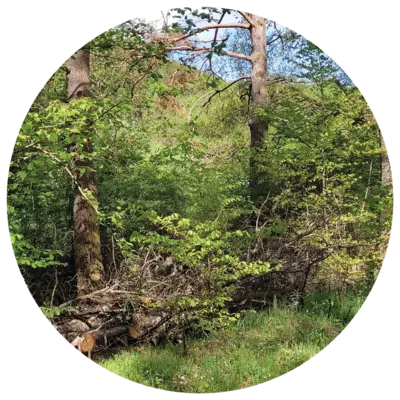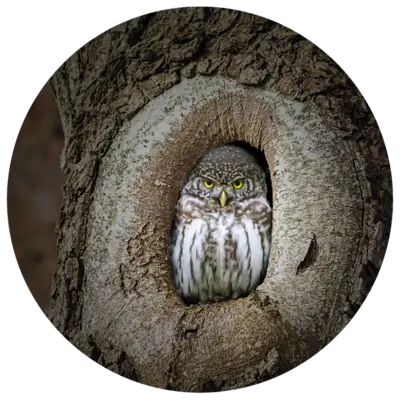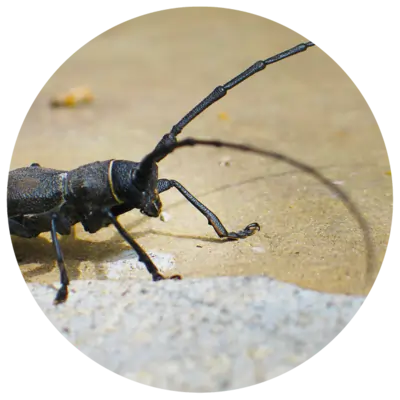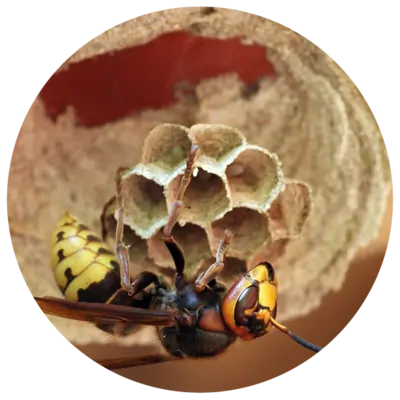Hotspots of rare biodiversity
Biotope trees are mostly very old, sometimes already dying or dead trees with a great structural diversity. They thus offer very special habitats for unique creatures. The characteristic features of these trees are, for example, trunk injuries, cracks, excrescences, crown fractures, bark pockets, cavities and eyries. Some are slanting or crooked.
These trees have no longer a commercial value and are allowed to die a natural death. In their decaying phase, they become particularly interesting for biodiversity. A great many and mostly very rare species groups are involved. For decades, even centuries, these trees enable continuous colonisation, which is of enormous importance for immobile life forms such as fungi, lichens or mosses.

Standing and lying deadwood
Old trees become first standing deadwood, then lying deadwood, and finally valuable forest soil is formed. Dead trees are therefore a valuable seedbed for forest regeneration, storing water, nutrients and carbon. Lying deadwood is cool, moist and therefore balances the microclimate.
Slanting trees
Crooked and slanting trees are important habitats for lichens and mosses. On the waterfacing upper side, mosses find ideal conditions, while the dry underside of the trees is attractive for lichens.
Strong vegetation with climbing plants
Trees heavily overgrown with ivy or other climbing plants are of great importance as a food source and nesting site for birds and insects, which is why they are also considered biotope trees worthy of protection.

European pygmy owl in tree hollow
Cavity dwellers such as woodpeckers, stock doves, tawny owls and European pygmy owls depend on cavity trees. For birds, they are of great importance as a source of food. Nowhere is insect diversity greater than in these structurally rich habitats.

Great capricorn beetle
The great capricorn beetle is one of the largest beetles in Europe and is considered a „primeval forest relict“. It depends on old, thick-trunked oaks to live. This insect and its larvae feed on the nutrient-rich sap flow of injured old trees. The beetle species is stationary. Often, several generations live on the same tree.

Hornet
Tree hollows in old trees are essential for the survival of hornets, as they can build their nests here largely undisturbed. They are an endangered species and are considered a protected species.
Old and biotope trees
- as a rare habitat, provide a livelihood for thousands of often endangered, highly specialised animals, plants, fungi, mosses and lichens.
- foster a valuable microclimate, are a source of food and off er shelter.
- require special protection to maintain biodiversity in harmony with safety and forestry needs.